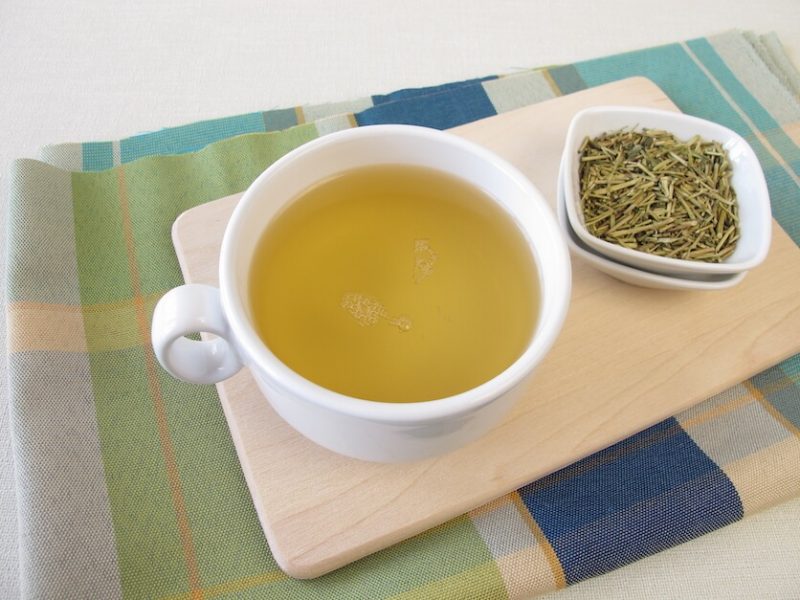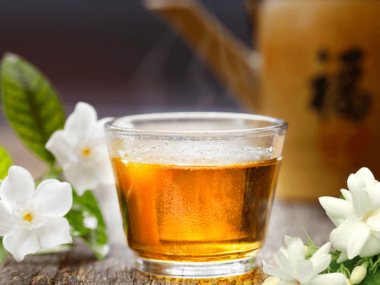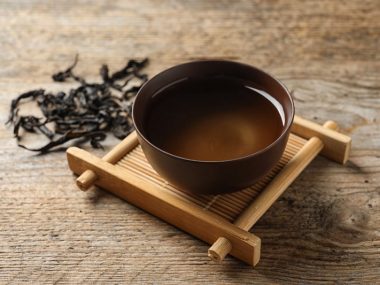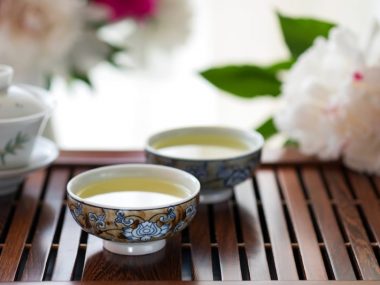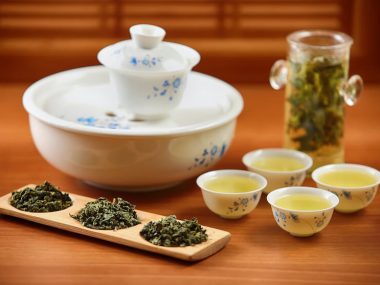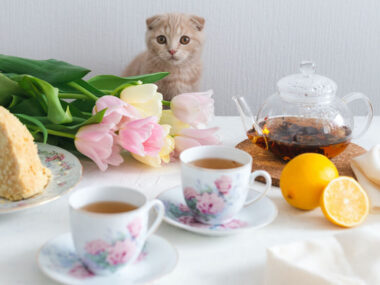Move over decaf and herbal teas, there’s a new kid in town! Have you been searching for a tea that has all of the qualities of a fine tea but without the caffeine hype? Even better, we have a tea that is ultra-low in caffeine with a constituent that cancels out that caffeine! Then you’d love to try kukicha tea.
Table of Contents
What Is Kukicha Tea?
Who knew a yellow (but classified as green) tea that was once sampled by those who could not afford “proper” tea would become one of the most consumed green teas today in Japan? The twigs and stems of other green tea plants were harvested by the poor many years ago to brew for tea which became known as “Kukicha.”
What is twig kukicha tea? Kukicha twig tea is nothing more than a slang term used for Kukicha. Depending on what part of Japan you are in, Kukicha tea may be referred to as Karigane, Boucha, Kaga Boucha, or Shiraore. Slang names for Kukicha include “twig tea,” “poor people’s tea,” or “stalk tea.”
Teamakers, at some point, decided to try the so-called “tea for the poor” and were surprised at how tasty it was. It was from that point that Kukicha became a harvestable by-product of high-quality green teas. Japan’s tea culture enjoys and appreciates the flavorful quality Kukicha provides, and we might add that this tea is very affordable!
If you were to look at loose-leaf Kukicha tea, it would look like short sticks with various green and yellow colors. It has a somewhat minimalist appearance causing first-time tea buyers to pause with the assumption that it’s a bit too rustic for tea. However, this tea’s looks are ever so deceiving because it makes a lovely cup of tea!
How Kukicha Is Made
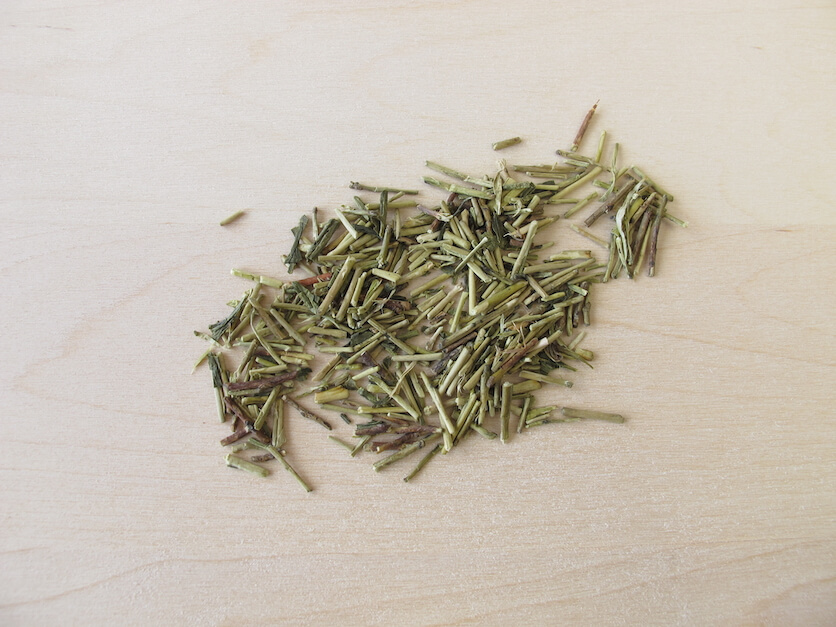
Various tea farms in Japan grow tea plants intended for Gyokuro (first flush, highest-grade tea,) Sencha (first flush, high-grade tea,) Tencha (first flush, high-grade tea grown to make Matcha tea), or Bancha (low-grade tea.) To make Kukicha, tea farmers harvest the stems, twigs, and sometimes the veins of the tea leave from one or several of the tea plants for these teas.
Come harvest time (flushes), the tea leaves of those tea plants are carefully plucked, leaving behind some leaves, twigs, and stems. These twigs and stems are harvested to make Kukicha tea. Many tea farmers harvest tea leaves of Gyokuro, Sencha, Tencha, or Bancha simultaneously to the twigs/stems/leaf veins for Kukicha. Other tea farmers prefer to allow the stems and twigs to age as long as three years, or they may opt to harvest in later flushes.
The twigs, stems, and/or leaf veins harvested for Kukicha are separately processed. Post-processing may include roasting to enhance the flavor or go on to be blended in with other teas. To complete the processing portion of Kukicha, Sencha or Gyokuro is often blended in with Kukicha to add a layer of flavor and a nice lighter contrast of color.
Where In Japan Is Kukicha Tea Grown?
The Kyoto and Shizuoka regions of Japan are where you’ll find Kukicha tea farms. Few tea farmers produce Kukicha, which is why this tea is rare. If you do happen to find some, it may be green (or brown from roasting).
The tea culture in Japan has a belief (or superstition) that finding a twig floating in your cup of tea is a sign of good luck. Kukicha drinkers must find that they have a wealth of luck from those loose twigs that happen to fall into their teacup.
What Does Kukicha Tea Taste Like?
Kukicha tea is one of those teas that has layers of flavors. Drinking this tea is like opening a gift. Layers of blissful sweet nuttiness catch the attention of your palette. Hints of a milky saltiness bathe your mouth with a very slight astringent finish.
Does Kukicha Tea Have Caffeine?
You will be happy to know this tea is one of the lowest caffeinated teas there are. Tea leaves (especially young buds and first flushes) are the part of the tea plant that contains the highest amount of caffeine. The stems and twigs of the tea plant have little to almost no caffeine.
Because Kukicha is made from the twigs and stems of the tea plant, there is far less caffeine compared to Sencha tea made from the tea leaves. A cup of Sencha may have up to 40 mg of caffeine in a six-ounce cup, whereas Kukicha barely passes the 14 mg mark as far as caffeine goes.
Being low in caffeine isn’t the only feature of this tea. According to a research study entitled “A Double-Blind Placebo-Controlled Study Evaluating The Effects Of Caffeine And L-Theanine, Both Alone And In Combination On Cerebral Blood Flow,” mentions that theanine eliminates the effects of caffeine such as jitters, heightened alertness, etc. This evidence indicates Kukicha as being a tea you can confidently enjoy any time of day (including at bedtime) without the caffeine side effects.
Kukicha Tea Benefits
Now that we know Kukicha tea is not a caffeine liability let’s take a look at the benefits that tea is well known for.
What Is Kukicha Tea Good For?
It was a challenge to find evidence-based information on the benefits found in Kukicha tea. It appears that research on this tea is severely lacking. An article on Kukicha produced by David and Cynthia Briscoe (Counselors/Experts in Macrobiotics) highlights the benefits we gain from drinking Kukicha tea:
Kukicha tea as being a powerhouse of minerals and vitamins, all of which are hefty antioxidants. This tea contains vitamin A, B-complex, and C. Minerals include calcium, copper, fluorine, iron, manganese, magnesium, phosphorus, potassium, selenium, and zinc.
With these minerals and vitamins on board, by consuming Kukicha tea, we benefit in numerous ways. Partnered researchers published a study (“Natural Flavonoids: Structure Elucidation, Distribution, and Applications”) that mentions tea consumption helps to fight infections and viruses by boosting the immune system.
The Molecules Journal published a study (“Green Tea Quality Evaluation Based on Its Catechins and Metals Composition in Combination with Chemometric Analysis”) noting the value of tea. The study specifically mentioned the elevated amount of zinc in Sencha tea which is a potent booster for our immune system and overall metabolism. As a result of optimized metabolism, we burn fat much better leading to weight loss.
Lastly, in the “Current Pharmaceutical Design” journal, a research study reflected several beneficial aspects tea provides. By drinking tea, our bodies have better cardiovascular health, better metabolism, and a reduction in chronic inflammation associated with arthritis.
Is It Okay To Drink Kukicha Tea Every Day?
Even the healthiest of teas should be consumed within moderation. Too much of any good thing turns out to be bad, as they say. Kukicha is a perfect tea to enjoy in the late afternoon or evening as a caffeinated tea alternative. Those of us who love tea find it challenging to cut off our tea-drinking by around 3:00 pm. If we don’t, we have trouble getting to sleep at night.
What Is The Difference Between Green Tea And Kukicha Tea Benefits?
According to a research article, “Comparison of Flavor Components between Kukicha (Stalk Green Tea) and Sencha (Green Tea),” Kukicha green tea is much lower in caffeine compared to other green teas. Caffeine is concentrated in the leaves of a tea plant. To make other green teas, those tea leaves are harvested and processed, whereas to make Kukicha, only the twigs and stems (and the occasional leaf veins) are harvested to make Kukicha. The twigs and stems of a tea plant are significantly lower in caffeine.
Other green teas, however, are higher in phenols (constituents that benefit us) compared to Kukicha. Kukicha contains higher levels of theanine, whereas many other green teas are lower. As for taste, Kukicha is sweet and has far less astringency than some green teas.
How Do You Drink Kukicha?
So, you have your Kukicha tea and are ready to make a brew! Let’s walk through the steps to making that perfect cup of low-caffeine, luscious, nutty tea.
Brewing The Perfect Cup Of Kukicha
Ingredients
- 2 cups of water
- 3 teaspoons of loose-leaf Kukicha tea
Directions
- Heat your water to about 175 degrees (F) (80 degrees C.)
- Remove from the heat.
- Place your loose-leaf Kukicha tea into a tea infuser.
- Drop the tea infuser into the teapot.
- Pour the hot water into the teapot.
- Place the cover onto the teapot.
- Allow the tea to steep for about 1 minute.
- Remove the cover and pour the tea into a teacup and enjoy!
Pairing Tip: Kukicha’s sweetness makes it a lovely tea to enjoy with an evening dessert. The tea is almost a dessert in and of itself.
Kukicha’s “Kick” Is A Keeper!
There’s a lot of “good” going for this tea making it a tea that’s too good to pass up. It’s a perfect tea to enjoy during those times when a caffeinated tea won’t do. Who knew that a poor man’s tea would turn out to be a sought after tea!
